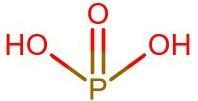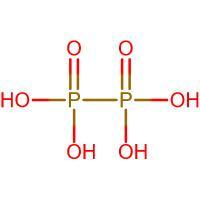
The oxidation states of P atom in $POC{{l}_{3}},{{H}_{2}}P{{O}_{3}}$ and ${{H}_{4}}{{P}_{2}}{{O}_{6}}$ respectively are:
Answer
220.8k+ views
Hint: Draw the structures of $POC{{l}_{3}},{{H}_{2}}P{{O}_{3}}$ and ${{H}_{4}}{{P}_{2}}{{O}_{6}}$ .Keep in mind the valency of the P atom to avoid any mistakes. Try calculating oxidation state of P by trying to balance the positive and
the negative charge in the compound.
Complete step by step solution:
We will draw the structure for the three compounds given above to find the oxidation state.
Structure of $POC{{l}_{3}}$:

There are 5 bonds around the central P atom, hence the oxidation state of P is 5.
Structure of ${{H}_{2}}P{{O}_{3}}$:

There are 4 bonds around the central P atom, hence the oxidation state of P is 4.
Structure of ${{H}_{4}}{{P}_{2}}{{O}_{6}}$:
In the above case, we consider the number of bonds around each P excluding the P-P bond as it is not counted when calculating the oxidation state. There are 4 bonds around each of the P atoms, hence the oxidation state is 4.
Therefore, the correct answer is option (A).
Additional information:
While calculating the oxidation state of an atom we count the number of bonds around the atom. In reality, we mean to count the number of heterogeneous bonds i.e. both the atoms are not identical. Homogenous bonds like P-P do not contribute to the oxidation state of the atom and hence it is not counted.
Note: While writing the structure of the compound, keep in mind the maximum valency the central atom can show and make the bonds accordingly. Do not count homogenous bonds while calculating the oxidation state of the central atom.
the negative charge in the compound.
Complete step by step solution:
We will draw the structure for the three compounds given above to find the oxidation state.
Structure of $POC{{l}_{3}}$:

There are 5 bonds around the central P atom, hence the oxidation state of P is 5.
Structure of ${{H}_{2}}P{{O}_{3}}$:

There are 4 bonds around the central P atom, hence the oxidation state of P is 4.
Structure of ${{H}_{4}}{{P}_{2}}{{O}_{6}}$:
In the above case, we consider the number of bonds around each P excluding the P-P bond as it is not counted when calculating the oxidation state. There are 4 bonds around each of the P atoms, hence the oxidation state is 4.

Therefore, the correct answer is option (A).
Additional information:
While calculating the oxidation state of an atom we count the number of bonds around the atom. In reality, we mean to count the number of heterogeneous bonds i.e. both the atoms are not identical. Homogenous bonds like P-P do not contribute to the oxidation state of the atom and hence it is not counted.
Note: While writing the structure of the compound, keep in mind the maximum valency the central atom can show and make the bonds accordingly. Do not count homogenous bonds while calculating the oxidation state of the central atom.
Recently Updated Pages
The hybridization and shape of NH2 ion are a sp2 and class 11 chemistry JEE_Main

What is the pH of 001 M solution of HCl a 1 b 10 c class 11 chemistry JEE_Main

Aromatization of nhexane gives A Benzene B Toluene class 11 chemistry JEE_Main

Show how you will synthesise i 1Phenylethanol from class 11 chemistry JEE_Main

The enolic form of acetone contains a 10sigma bonds class 11 chemistry JEE_Main

Which of the following Compounds does not exhibit tautomerism class 11 chemistry JEE_Main

Trending doubts
JEE Main 2026: Application Form Open, Exam Dates, Syllabus, Eligibility & Question Papers

Derivation of Equation of Trajectory Explained for Students

Hybridisation in Chemistry – Concept, Types & Applications

Understanding the Angle of Deviation in a Prism

How to Convert a Galvanometer into an Ammeter or Voltmeter

Degree of Dissociation: Meaning, Formula, Calculation & Uses

Other Pages
NCERT Solutions For Class 11 Chemistry Chapter 7 Redox Reaction

JEE Advanced Marks vs Ranks 2025: Understanding Category-wise Qualifying Marks and Previous Year Cut-offs

Hydrocarbons Class 11 Chemistry Chapter 9 CBSE Notes - 2025-26

Thermodynamics Class 11 Chemistry Chapter 5 CBSE Notes - 2025-26

NCERT Solutions ForClass 11 Chemistry Chapter Chapter 5 Thermodynamics

Equilibrium Class 11 Chemistry Chapter 6 CBSE Notes - 2025-26




